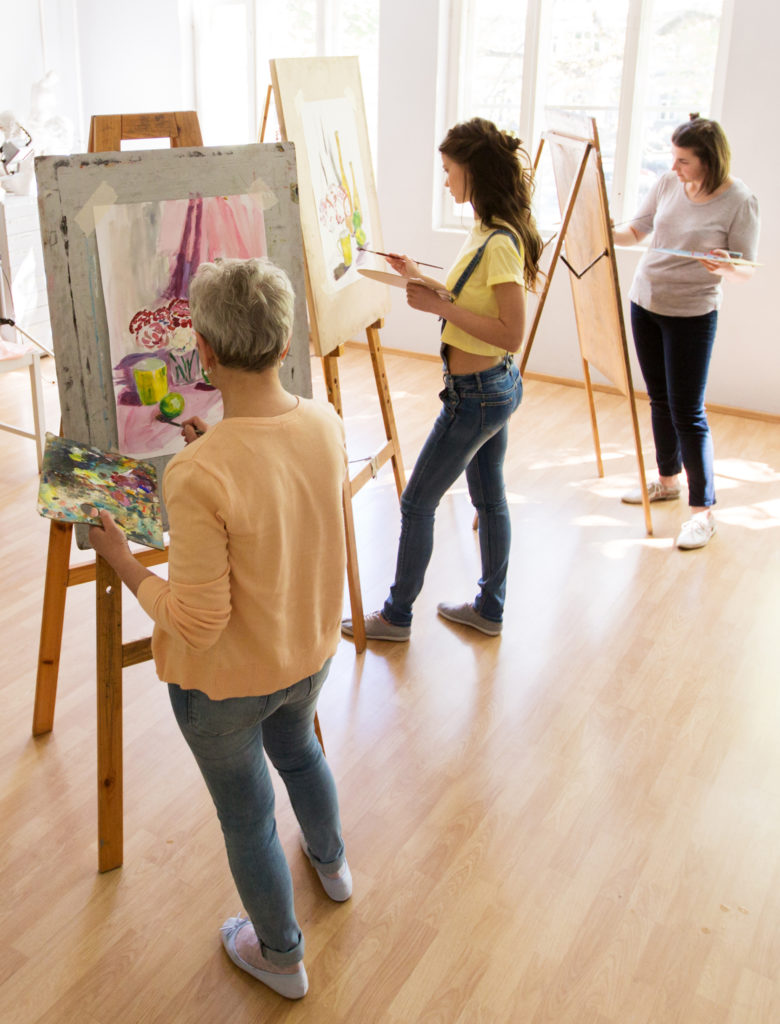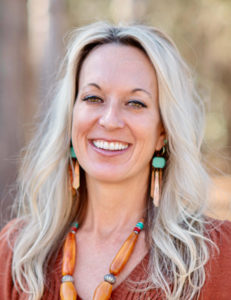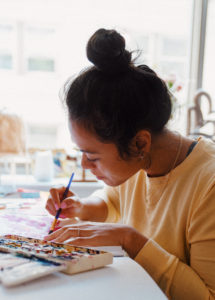Creating art can be a way to achieve clarity and growth for wellness.

There are myriad ways to improve and enhance one’s physical and mental wellness. Among those are programs offered by community groups as well as in clinical settings by highly trained and nationally certified art therapists.
Such creativity in the latter case goes much deeper than painting a symbolic chrysalis from which a butterfly emerges with a new body and beautiful wings.
According to the American Art Therapy Association, “Art therapists work with people who are challenged with medical and mental health problems as well as individuals seeking emotional, creative and spiritual growth.”
Art therapists are master-level clinicians and can be found working in venues such as hospitals, schools, clinics, private practice, psychiatric and rehabilitation facilities, crisis centers and senior communities. The Guest House Ocala, a recovery center for adults, offers multifaceted programs to patients at the facility, including art therapy.
“Art therapy connects to the part of the brain that processes emotion and instinct;
talk therapy to the logical parts of the brain,” offers Thomas Pecca, the senior clinical advisor at the venue. “For true healing, we must engage all three and the combination of art, experiential and talk therapy do that.”

Kristi Labenne is the art therapist at The Guest House Ocala and a certified trauma therapist. We asked her to tell us about her experiences.
How does art therapy work?
It is designed as a creative modality to heal old wounds and emotional trauma. It allows the individual to explore areas of trauma and/or addiction that may be hidden and not easily accessed by talk therapy.
Exploring the issue is often less intimidating using the artwork created to ask questions and explore difficult topics such as sexual trauma, love and sex addiction, co-dependency, chronic depression, anxiety, substance use disorder and process addictions (process addictions are linked to behaviors including eating, having sex, shopping, gambling, playing video games and social media bingeing).
Each art therapy directive is designed to assist with the individual’s therapeutic goals. My experience facilitating art therapy sessions has led me to believe each individual has an inner knowing or creative healer that guides them through the artistic process to reveal a truth needed to facilitate change. My therapeutic training helps facilitate this experience in a safe and supportive environment.
Art therapy is not about how well you can draw, paint or use a medium. It’s about engaging in the creative process, exploring the language of the heart, sublimating feelings and emotions, and allowing the artwork produced to act as a translator.
What are some of the media used?
Art therapy modalities consist of a variety of media such as paint, clay, markers, collage, 3-D, oil, spray paint, craft dolls, tissue and craft paper, mixed media, giant puzzles for unity projects, wooden stick figures glued to a painted canvas to represent where the person feels they are in an unhealthy cycle or pattern of behavior and masks sculpted and painted to create a visual image of what it is like to be in active addiction or recovery.
How did you decide on this career?
My passion started at an early age, painting with watercolor. My parents enrolled my brother and I in art courses, paid for private oil painting classes and sent me to Italy on an art history tour in high school for college credit. I was in advanced placement art in high school and enjoyed teaching kids and sharing the creative process with others in the community. I graduated with a B.A. from Pacific University in 2001 and immediately started to complete psychology courses for the graduate art therapy program at Marylhurst University. I am by nature a healer, an advocate for others and a creative person, so a career in art therapy seemed like a perfect fit.
What brought you to Ocala?
I am in long-term recovery and lived through an all-consuming addiction years before becoming sober. I was offered the gift of recovery through an intervention from friends who contacted my family. I began my journey in recovery at a long-term treatment facility. As I became committed and passionate about working in the field of addiction, I realized my darkest days could be used as one of my greatest assets, not only as a woman in recovery but as an art therapist.
I moved to St. Augustine in 2015 to help open a long-term drug and alcohol recovery center and began implementing art therapy. About four years into recovery, my trauma presented in ways that were disruptive and unmanageable. I sought counseling and it helped for a time but wasn’t enough. I was blessed to attend a “Spirit2Spirit Healing” trauma retreat, hosted by Judy Crane and Tom Pecca of The Guest House Ocala, which changed my perspective on how trauma affected my life and so many of us working as professionals in the field of recovery. This opportunity to engage with my own trauma work and become a certified trauma therapist helped me avoid relapse, capitalize on the gift of my artistic ability professionally and personally, and promote a future as a thriving art therapist.
To learn more, visit arttherapy.org and for more information on The Guest House Ocala, visit theguesthouseocala.com.
Artistic Options
There are several arts programs in the area, some of which are targeted as therapy and some that are not but are said to achieve that outcome as part of the creative process. There also are programs that offer art created as part of the healing process as fundraisers for local programs. Examples include:
• Hospice of Marion County: Art therapy classes at the Monarch Center for Hope and Healing. hospiceofmarion.com
• Florida Center for the Blind: Offering art therapy through the enrichment class program. flblind.org
• Kimberly’s Center for Child Protection: Children create artworks that are auctioned off in the Art & Soul fundraiser for center programs. kimberlyscenter.org
• Master the Possibilities: In the Reflections on Loss Through Art course, students review and reminisce with pointers for resolving grief through art, collage, journaling and crafts; the next session will be in May. In the meantime, numerous art classes are offered such as ceramics, pottery, stained glass, painting, pine needle basket weaving, rock painting and making fairy houses. masterthepossibilities.org
• Marion Cultural Alliance: Numerous programs, such as the annual Art of Aging in partnership with Marion Senior Services. mcaocala.org and marionseniorservices.org
• The nonprofit Wear Gloves Inc. helps those in need get back on their feet and rejoin the community through initiatives including the Dignity Center, Dignity Roasters Coffee and Church in the Garden. The Art Recovery program is offered at the center each Tuesday. weargloves.org
• The Artistic Spectrum is a nonprofit that offers studio time and art classes to the public. Proceeds go towards autism acceptance and other special needs causes. theartisticspectrum.org
• UF Health Shands Hospital: As part of the Arts in Medicine Program, art therapy is used with children, adolescents and their families to support the medical healing process.
artsinmedicine.ufhealth.org






